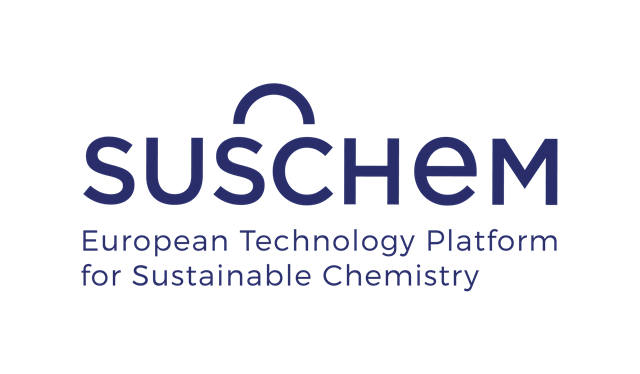From the presentations and discussion it is clear that a new European model of innovation is possible, but requires increased levels of communication, collaboration and creativity to complement technological change. Fortunately, Europe has a history of collaboration and a track record of engaging with complexity at technical, cultural and human levels. With the right support and framework the new model can tackle our societal challenges in a smart and inclusive manner for the benefit of all.
Speakers from Cefic and SusChem outlined a number of proposed innovation programmes. The debate was moderated by SusChem Newsblog editor Tim Reynolds of Inta Communication (right below). First Gernot Klotz, Executive Director for Research & Innovation at Cefic (left below) explained what innovation means to the industry and the need for change in technologies and mind set, from both private and public partners, to face many societal challenges faced by Europe.
Chemistry innovation
Compelling examples that demonstrated the leading role of the chemical sector in driving innovation in the four priority areas chosen by SusChem, and how some of the challenges can be addressed were provided by the next speakers. Patrick Francoisse of Solvay (second left below) talked about the ‘Smart Cities’ initiative, while Mike Pitts of the UK’s Chemical Innovation Knowledge Transfer Network (third from left below) described how we can satisfy the needs of 9.5 billion people on one planet through better use and reuse of critical raw materials.

Felix Mueller of Evonik Industries (third from right above) outlined the potential for the process industries to further improve resource efficiency and effectively “do more with less” through the proposed major Public Private Partnership (PPP) (SPIRE). Finally Antonia Morales Perez from Cefic (second from right above) described the chemical industry as simultaneously one of the biggest water-consuming industries, and one of the biggest providers of water treatment materials and technologies. The “Water Efficient Europe” European Innovation Partnership (EIP) has to adopt a symbiotic approach reusing and recycling water, and improving water treatment methods to recover raw materials and achieve sustainable production of appropriate qualities of water for appropriate use.
Communicate, collaborate, create
A subsequent interactive panel discussion featured Herbert von Bose, Director of Industrial Technologies at the European Commission DG Research (second right below), journalist Laura Shields of The Media Coach (second left)and chemistry student David Dupont from Leuven University (left).

All contributors agreed that there was a need to have a clear innovation agenda and to communicate widely: communication was the first step towards collaboration – and without collaboration there could be no opening of minds, no implementation and no creativity – no matter how wonderful the new technology was. Bringing different players together is very important and innovation must be driven by needs. High hopes were put on the chemical industry in Europe, as a global leader that interacts with virtually all other sectors and value chains, to provide solutions. It was therefore well placed to inspire and lead innovation.
For European innovation to be more successful and adopted by society, we need to focus not so much on techniques and technologies, but more on the outcome - the end-result - from a user point of view. To achieve this needs new ways of communication, collaboration and a cultural change of mind set is essential to give Europe a real sustainable advantage in global competition.

No comments:
Post a Comment
Please post your comment here. Please note that this newsblog is not moderated.
Note: only a member of this blog may post a comment.